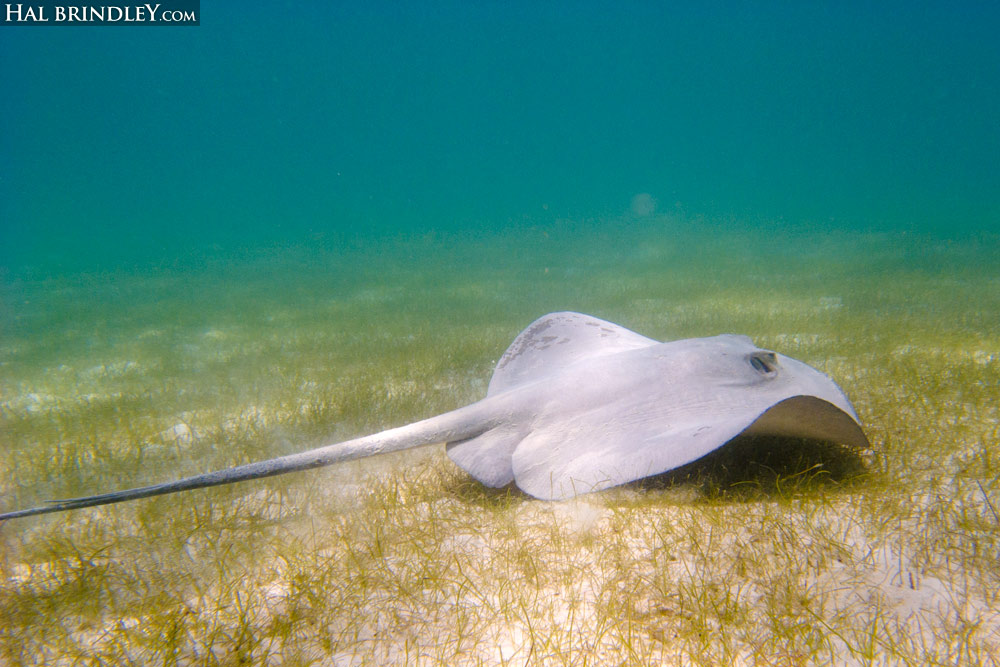Southern Stingray
(Dasyatis americana)
The Southern Stingray is a solitary nocturnal bottom-feeder. But when fishermen start throwing fish scraps into the sea over and over, stingrays begin to congregate. That’s what happened in Isla Contoy, Mexico. where I took this photo. The fisherman have since been replaced by tourists who feed the rays. This female Southern Stingray is begging for food. (Females grow up to five feet across and males are generally only half that size.)
At many sites in the Caribbean, stingrays are fed by tourists and divers. A study has shown that swimming with stingrays is having a negative impact on the health of those stingrays. Tourists also have the habit of touching the stingrays, usually around the edge of their fins. I’ve read that rays have a coating of protective mucous on their skin which is damaged by repeated handling. I can’t find a study on the subject, but I’ve definitely noticed that in places where stingrays are repeatedly touched, the edges of their fins do not look very healthy. (Photo below of a well-handled ray in Shark-Ray Alley, Belize.) The study also showed that stingrays showed more frequent bite wounds from competition with other stingrays at tourist feeding sites.

At other sites, where rays are less frequently handled, they don’t have the mottled appearance on the edge of their fins. (Example below: Southern Stingray in the Bay of Akumal, Mexico)

The moral of the story? You don’t have to touch and feed a stingray to enjoy its presence. You can observe these magnificent animals from a distance and smile into your snorkel!
